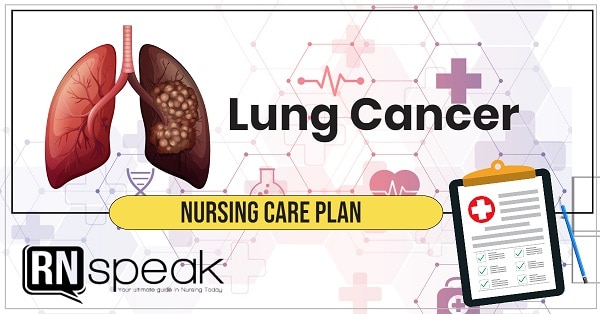Lung cancer is the leading cancer killer among men and women in the United States, last 2008 (American Cancer Society, 2008). In the Philippines, Lung Cancer deaths reached 8,518 or 2.02% of total deaths according to a survey by WHO last 2011.
Classification/Staging
Lung cancer is divided into two categories: small cell lung cancers (SCLC) and non-small cell lung cancers (NSCLC).
Non-small cell lung cancers are further divided into cell types:
- Squamous cell carcinoma
- Large cell carcinoma
- Adenocarcinoma
Also lung cancer is divided into different stages for the purpose of appropriate medical treatment and care.
- Stage I: The earliest and most curable stage. Cancer is localized to the lungs and has not spread to other organs or distant sites.
- Stage II: The cancer is in the lung and nearby lymph nodes.
- Stage III: Cancer has spread to lymph nodes within the lung and/or around the area of the lungs.
- Stage IV: Metastatic spread to both lungs and to other organs.
Risk Factors
- Cigarette Smoking
- Secondhand smoke
- Arsenic, Asbestos, and other occupational and environmental pollution
- Genetics
- Underlying respiratory diseases
Surgery
- Lobectomy is a removal of one lobe and preferred for peripheral carcinoma localized in a lobe. The chest cavity is entered through a long back-to-front incision, and the diseased lobe is removed.
- Bilobectomy is procedure where two lobes of the lung is removed.
- Wedge or segmental resection is performed when the lesions is contained within one segment.
- Endoscopic laser resection is performed when there is presence of peripheral tumors.
- Pneumonectomy is the removal of the entire lung.
Nursing Priorities and Management for Lung Cancer
1. Maintain a patent airway
- Auscultate chest for character of breath sounds, noting adventitious breath sounds.
- Provide a turning schedule, placing the patient in supine, sitting, and on his sides.
- Suction the patient as needed. However, avoid routine suctioning because it increases the risk of hypoxemia and mucosal damage.
- Instruct in effective deep breathing and coughing with upright position (sitting) and splinting of incision.
- Perform postural drainage, vibration, and percussion as indicated.
- Administer bronchodilators, expectorants, and oral analgesics as indicated.
2. Improving Gas Exchange
- Measure vital signs (BP, RR, HR, and Temp.) noting abnormalities.
- Monitor pulse oximetry and ABG readings.
- Encourage patient to breathing techniques such as diaphragmatic and pursed-lip breathing every two hours. These techniques are usually taught prior to surgery.
3. Controlling the pain
- Assess client’s verbal (pain scale) and nonverbal pain cues (facial grimacing, guarding behavior).
- Provide comfort measures such as back rubs and support with pillows.
- Instruct patient to use diversional activities: guided imagery, visualization, and deep breathing.
- Assist with self-care activities.
- Administer intermittent analgesics as indicated especially before deep-breathing and coughing exercises.
4. Maintaining Fluid Volume and Nutrition
- Assess intake, output, vital signs, and jugular distention.
- Administer intravenous fluids as indicated. Fluids should be administered at a low hourly rate and titrated as prescribed by the physician.
5. Provide information about disease process, prognosis, and planned therapies. (Discussed in the sample nursing care plan)
Nursing Care Plan Lung Cancer
Nursing Problem with cues
Problem
Knowledge Deficit
Subjective cues: “What are my options for the treatment of my lung cancer?” as verbalized by the client.
Defining Characteristics:
- Many questions
- Lack of Questions
- Verbalized misconceptions
Nursing Diagnosis With Rationale
Knowledge Deficit related to unfamiliarity with causes, diagnostic evaluation, and treatment.
Objectives
(SMART)
After 2 hours of health teaching client will be able to:
- Describe at least 2 probable causes of his/her cancer.
- Describe at least 3 diagnostic evaluations for lung cancer.
- Explain at least 2 treatments for own type of lung cancer.
Nursing Interventions
Assessment:
- Elicit client’s understanding of causes, diagnostic evaluation, and treatment interventions for lung cancer.
Rationale:
Assessing client’s knowledge and understanding of causes, diagnostic evaluation, and treatment interventions for lung cancer helps in determining management needs and the effectiveness of the treatment/program.
Health Teachings:
1. Explain possible causes of lung cancer.
Rationale:
Identifying possible causes such as tobacco, passive exposure to smoke, asbestos, air pollution containing benzopyrenes and hydrocarbon is important in preventing higher risk of exposure.
2. If patient is a smoker, discuss strategies for stopping smoking.
Rationale: Continued smoking in the face of treatable lung cancer may hasten death. However, the perceived pressure to stop smoking is an added stressor to patient with newly diagnosed lung cancer.
3. Communicate information on risk to children and non smokers caused by environmental tobacco smoke.
Rationale:
Passive smoke is a known carcinogen in individuals with long-term exposure.
4. Discuss the diagnostic evaluation:
- Chest radiograph
Rationale: May be the initial test performed when new symptoms are reported.
- Collection of Sputum
Rationale: For Cytologic evaluation.
- Bronchoscopy
Rationale: Brush biopsies and multiple bronchial washings are performed to obtain a tissue diagnosis.
Bronchoscopy is mandatory for small cell cancer.
- Mediatinoscopy
Rationale: Used to sample lymph nodes; is mandatory for staging non-small cell cancer if surgery is contemplated.
- Pulmonary function test
Rationale: Predicts whether lung function is sufficient to tolerate a surgical resection. Most patients with lung cancer are chronic smokers with poor lung function.
5. Discuss the following tests:
- Brain/Head CT and MR scans
Rationale: Diagnostic procedure used to look for brain metastasis.
- Liver and abdominal CT scans
- Bone Scan
Rationale: Diagnostic Procedure used to evaluate the liver and adrenals.
To assess if client has bone pain.
6. Discuss staging classifications
Small Cell cancer:
- Limited stage
Rationale: Includes lesions confined to a hemithorax that can be encompassed in a single radiation therapy port. “Port” refers to the anatomic location designated to receive radiation therapy
- Extensive stage
Rationale: Includes all other disease.
Non-small cell cancer
- Revised tumor, node, and metastasis (TNM) staging classification
Rationale: The clinical diagnostic stage is based on pretreatment scans radiographs, biopsies and mediastinoscopy and is used to determine respectability. The postsurgical pathologic stage is based on analysis of tissue obtained at thoracotomy and is used to determine prognosis as well as the need for additional treatment.7. Explain treatments forSmall cell cancer:
- Chemotherapy
Rationale: Small cell cancer spreads from the primary site and because of its increased sensitivity to chemotherapy; combination chemotherapy is the major treatment.
- Prophylactic cranial radiation
Rationale: Used in patients who have limited disease and those who go for 6 months without relapse.8. Explain treatments forNon-small cell cancer:
- Chemotherapy
Rationale: Offers palliation of symptoms.
- Radiation Therapy for Regional inoperable tumor
Rationale: Relieves symptoms in a significant percentage of patients.
- Surgery for Resectable Disease (Stages I-IIIA)
Rationale: Surgical resection offers the best chance for long-term survival.
References
- American Cancer Society, Inc. (2014). Lung Cancer (Non-Small Cell). Retrieved at http://www.cancer.org/cancer/lungcancer-non-smallcell/detailedguide/non-small-cell-lung-cancer-staging
- Doenges, M., Moorhouse, M., Murr, A. (2006) Nursing Care Plans: Guidelines for individualizing client care across the lifespan. F. A Davis Company, Philadelphia. 7th edition.
- Gulamick, Klopp, Galanes, et al., (1994) Nursing Care Plans: Pulmonary Care Plans. Mosby. Third Edition
- Lung Cancer Org. (2014). Types and Staging of Lung Cancer. Retrieved at http://www.lungcancer.org/find_information/publications/163-lung_cancer_101/268-types_and_staging
- Mosby. 2006. Mosby’s Pocket Dictionary of Medicine, Nursing, and Health Professions. Elsevier Singapore. 5th edition.
- Schilling McCann, J. (2007). Lippincott manual of nursing practice series: Pathophysiology. Lippincot Williams & Wilkins, Philadelphia.
- Silvestri, L. (2008). Comprehensive Review for the NCLEX-RN Examination. Saunders Elsevier. 4th edition.
- Smeltzer, S., Bare, B., Hinkle, J., Cheever, K. (2010). Brunner & Suddarth’s Textbook of Medical-Surgical Nursing. Lippincott Williams & Wilkins. 12th edition








